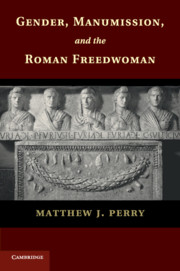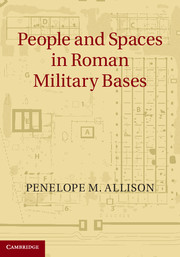Refine search
Actions for selected content:
23990 results in Ancient history
Bibliography
-
- Book:
- Ancestral Fault in Ancient Greece
- Published online:
- 05 October 2013
- Print publication:
- 07 November 2013, pp 473-538
-
- Chapter
- Export citation
Index
-
- Book:
- Redefining Ancient Orphism
- Published online:
- 05 December 2013
- Print publication:
- 07 November 2013, pp 423-425
-
- Chapter
- Export citation
Contributors
-
-
- Book:
- Old Saint Peter's, Rome
- Published online:
- 18 December 2013
- Print publication:
- 07 November 2013, pp xx-xxiv
-
- Chapter
- Export citation
Conclusion
-
- Book:
- Ancestral Fault in Ancient Greece
- Published online:
- 05 October 2013
- Print publication:
- 07 November 2013, pp 446-472
-
- Chapter
- Export citation
Old Saint Peter's, Rome - Half title page
-
- Book:
- Old Saint Peter's, Rome
- Published online:
- 18 December 2013
- Print publication:
- 07 November 2013, pp i-i
-
- Chapter
- Export citation
Chapter Three - The problem of definition
- from Part I - Introduction: Definitions old and new
-
- Book:
- Redefining Ancient Orphism
- Published online:
- 05 December 2013
- Print publication:
- 07 November 2013, pp 71-92
-
- Chapter
- Export citation
Redefining Ancient Orphism - Half title page
-
- Book:
- Redefining Ancient Orphism
- Published online:
- 05 December 2013
- Print publication:
- 07 November 2013, pp i-ii
-
- Chapter
- Export citation
Note on abbreviations
-
- Book:
- Redefining Ancient Orphism
- Published online:
- 05 December 2013
- Print publication:
- 07 November 2013, pp xii-xii
-
- Chapter
- Export citation
6 - The mausoleum of Honorius
-
-
- Book:
- Old Saint Peter's, Rome
- Published online:
- 18 December 2013
- Print publication:
- 07 November 2013, pp 119-136
-
- Chapter
- Export citation

Gender, Manumission, and the Roman Freedwoman
-
- Published online:
- 05 November 2013
- Print publication:
- 31 October 2013

People and Spaces in Roman Military Bases
-
- Published online:
- 05 November 2013
- Print publication:
- 31 October 2013

Ennius and the Architecture of the Annales
-
- Published online:
- 05 November 2013
- Print publication:
- 21 November 2013
4 - The terminology of translation
- from II - The locus of translation
-
- Book:
- Rabbis, Language and Translation in Late Antiquity
- Published online:
- 05 December 2013
- Print publication:
- 31 October 2013, pp 141-170
-
- Chapter
- Export citation
GENERAL INDEX TO VOLUME I
-
- Book:
- Jerusalem
- Published online:
- 05 October 2014
- Print publication:
- 31 October 2013, pp 457-480
-
- Chapter
- Export citation
7 - Rottweil (Ara Flaviae) – Forts I and II
-
- Book:
- People and Spaces in Roman Military Bases
- Published online:
- 05 November 2013
- Print publication:
- 31 October 2013, pp 152-178
-
- Chapter
- Export citation
Conclusion
-
- Book:
- Gender, Manumission, and the Roman Freedwoman
- Published online:
- 05 November 2013
- Print publication:
- 31 October 2013, pp 155-160
-
- Chapter
- Export citation
Index
-
- Book:
- People and Spaces in Roman Military Bases
- Published online:
- 05 November 2013
- Print publication:
- 31 October 2013, pp 481-487
-
- Chapter
- Export citation
Gender, Manumission, and the Roman Freedwoman - Title page
-
-
- Book:
- Gender, Manumission, and the Roman Freedwoman
- Published online:
- 05 November 2013
- Print publication:
- 31 October 2013, pp iii-iii
-
- Chapter
- Export citation
Contents
-
- Book:
- People and Spaces in Roman Military Bases
- Published online:
- 05 November 2013
- Print publication:
- 31 October 2013, pp v-vi
-
- Chapter
- Export citation
Appendix B - Vetera I: preparation and assessment of the data
-
- Book:
- People and Spaces in Roman Military Bases
- Published online:
- 05 November 2013
- Print publication:
- 31 October 2013, pp 361-382
-
- Chapter
- Export citation
